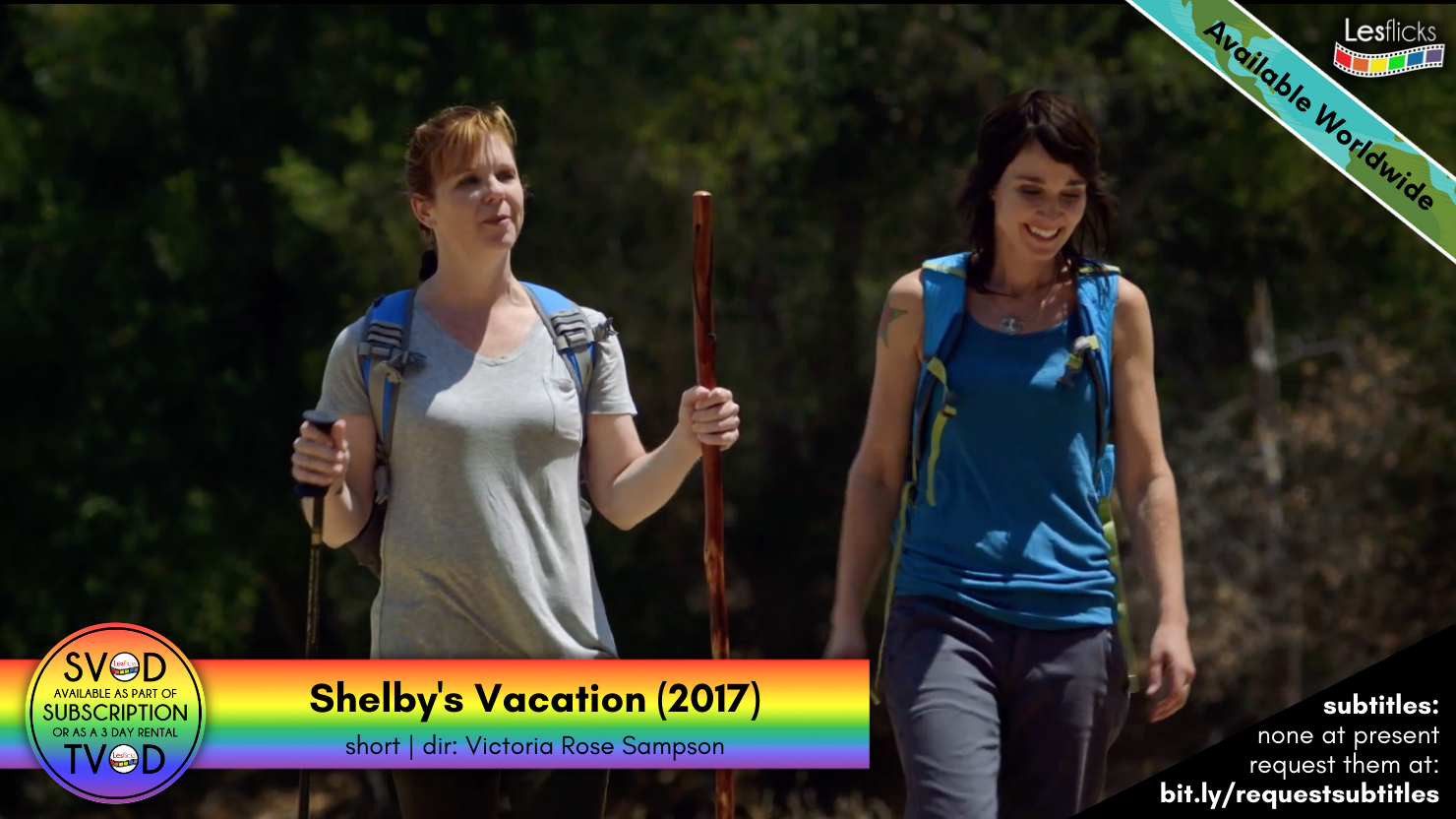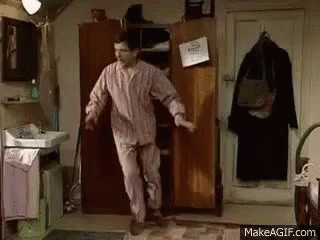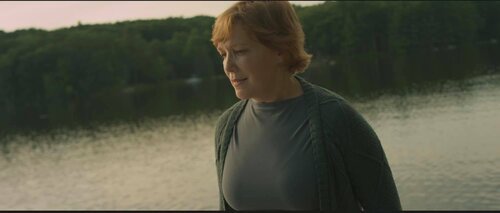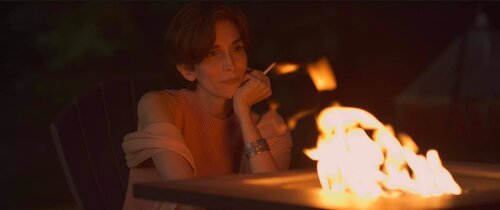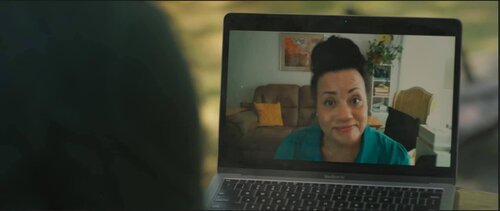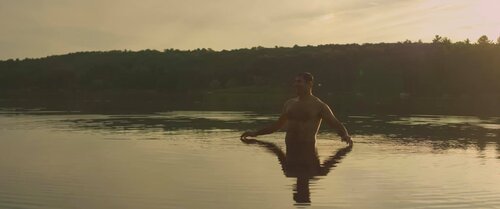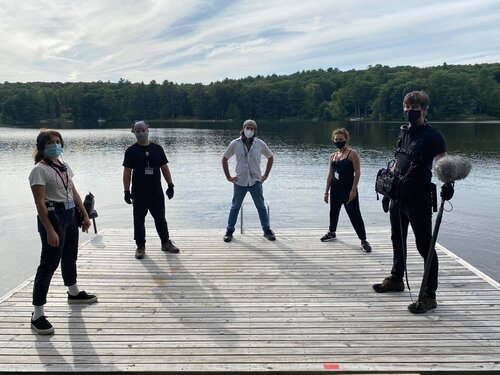I own two t-shirts that I wore as inspiration to get through the journey of making my film SHELBY’S VACATION. They will sound patently obvious… and yet, they are so true, as cliché’s are. One has a quote from Winston Churchill: “Never, never, never give up.” The other has Diana Nyad’s motto (and the title of her book about her swim from Cuba to the Florida Keys) “Find a Way.” I actually heard Diana talk at the LA Times Festival of Books. She was riveting. It took her five tries to do that swim and she accomplished the 110.86-mile journey at the age of 64. She found a way. If she could do that, I could find a way to make my film. And I didn’t have to worry about being stung by box jellyfish… although irritated State Park Rangers was a close second.
SHELBY’S VACATION, once upon a time, was a full-length feature script. I wrote the initial drafts in the mid 1990’s, inspired by a trip I’d taken to and from the Grand Canyon. On that trip (and all of my Grand Canyon trips), I stopped in Kingman, Arizona, for gas and food. It’s always windy in Kingman and when I opened my car door, a gust of wind blew through the car (the passenger window was down) and scattered all of my notes and maps (this was pre-internet). I thought, wow, what a great beginning to a movie. Our heroine gets completely lost because the universe yanks away her directions! I ended up sending my main character, Shelby, up highway 395 instead of into the desert, simply because I love the Sierra Nevada mountains.
The basic elements I crafted in the early drafts have always remained the same. Shelby, mid-to-late 30s, is heart-broken because once again she fantasized about a potential relationship that didn’t work out – and this most recent time was particularly humiliating because the crush was on her boss, Marion. She heads out of L.A. to find comfort in nature but loses her maps and directions thanks to the wind and ends up at a rustic resort high in the mountains. Of course she falls for resort manager Carol, who has her own fantasies (from the past instead of the future) that get in the way of creating a long-term relationship. Both women go on a journey to learn why they’ve held on to their idealized versions of love.
Having no clue as to how to move the movie ball down the field into production, I put the script away and focused on my stage plays and TV scripts.
In 2008 I took a vacation to Rock Creek Lake in the Sierra Nevada and thought, man, this is the perfect setting for SHELBY’S VACATION. So I got the script out, brought it in to my then-writers group, and polished it up. I’d tried previously selling my film script SIGNS OF LIFE by having a reading with actors and inviting small production companies. I got some interest but not strong enough to really launch it. If a straight romantic comedy wouldn’t quite sell, how the heck was I going to sell a lesbian dramedy?
I put the script away again.
Then I got an email in 2010 about a script contest called Chicago’s Pride Films and Plays. I noticed that the categories were geared toward gay men’s stories. I wrote the executive director of the contest, David Zak, asking him, “What about lesbian stories?” He wrote right back and said they would have a contest for our stories the next year. Hooray!
So when I got the contest announcement the following winter, I sent in SHELBY’S VACATION. Lo and behold, I made the semi-finals and then a few weeks later David’s group contacted me. They wanted to do a staged reading of the script for a gay pride event in Vermont. Hallelujah!
In July of 2011 I paid for my own plane ticket and made the trip to Randolph, Vermont as my summer vacation. I had a glorious time. I got to hear a fun reading of the script, ate samples at the Ben & Jerry’s factory, and I drove all over Vermont to hike in rolling green mountains – with no billboards on the interstate as I traveled!
Filled with passion from the Vermont experience, I returned to L.A. vowing to turn SHELBY into a film. I dug out three years of MovieMaker magazine and absorbed all the lessons producers who came before me had learned. I bought THE book on how to do a business plan and then learned the woman who wrote it (Louise Levison) lives mere blocks from me in the Sherman Oaks, so I paid her to critique MY business plan. I attached my first director… who stayed for just a few months and then dropped out. I attached director #2, who stayed on board for a few months… and then she, too, left, to focus on a TV stage-managing job. Director #3 was with me a few months, and then she moved to Washington State.
Finally, I reached out to a friend who sent an email blast to the Alliance of Women Directors (AWD). I should’ve done so years ago; I got two-dozen responses. I weeded and weeded and narrowed things down to a half dozen, did interviews, did second interviews in-person, and finally picked Vickie Sampson. Vickie and I had met many years ago in a networking group called Cinewomen, so there was a comfortable energy between us. She came armed to our meeting with a lot of enthusiasm about the story as well as printouts of actresses who could play the roles. Vickie had directed some heartfelt shorts, snappy award-winning PSAs and commercials and was hungry for a feature-length film. Perfect!
That was in May of 2013. Then the real fun began: Looking for Investors.
I devised a passionate one-page letter, a one-page story summary plus our creative team bios with years of experience in The Biz (Vickie brought along a great cinematographer and I had a couple of line-producer gals with us as well). I had my business plan; I had my budget (we had a variety of them over the years, but the smallest one I had for the feature version was $270,000). I made a look-book of photos I culled from my trips to the majestic Sierra Nevada mountains, where SHELBY’S VACATION is set. I set up an LLC, I hired a good designer to craft a website... I WAS ALL SET!
I approached a handful of reasonably well-off friends and got only one “yes,” but I thought it was a solid yes. I scoured back issues I had of the LN (Lesbian News, a legendary L.A. publication) for gals featured in articles and in ads for their real estate or law businesses.
Then I hit upon what I thought would be the ticket: I found a group up in San Francisco called StartOut. They provide mentoring for LGBT entrepreneurs starting their own businesses. I sent several of them my powerful letter – arguing how rarely we see quality lesbian films – THE KIDS ARE ALL RIGHT to name one of the rare ones back then. I pointed out that Hollywood so rarely said yes to these kinds of movies that we needed to fund from within our community. I explained that SHELBY was different than many typical gay films – no one was coming out; no one felt tortured about being gay. It was a story of two adults figuring out their relationship patterns and why they couldn’t live in the present. We’ve never seen this story before, I proclaimed from the mountaintop.
And what I heard in return: crickets. Over three+ years I approached 40 individuals, either as investors or someone who would know someone.
Meanwhile, we were networking. I’ve been going to Outfest every summer (L.A.’s huge LGBT film festival) since the early 1990’s and to ramp up for SHELBY, we worked it, baby, we worked it. I researched films ahead of time, their producers, their actresses, and then we went up to these folks after their screenings. We sent my script to some of them, had follow up phone calls, and even met a few at their offices. Vickie also got great at approaching well-known actresses after screenings at the Academy of Motion Picture Arts & Sciences. Sum result: nada.
So after four years of hard work, I had no attached stars, no production company backing and just two potential investors, neither of them 100% telling me what they would put in. That wasn’t enough to guarantee $270,000.
In July of 2015, I happened to read a lesbian detective novel called LEFT FIELD by Elizabeth Sims. It was charming, fun, engaging… and at the end of it I thought, HANG ON, I could turn the story of Shelby into a novel; that way I could tell the whole story and not worry about cutting the budget (because I was forever trying to get the budget down). Then, we could tell the end of the tale in a short film, say, 25 – 30 minutes. Forget investors, we could raise the money via a crowd-funding campaign.
Vickie agreed it was worth a shot.
I had been leery of doing a crowd-funding thing for a few reasons. First, I’ve done several of them with my writers/actors group Fierce Backbone and also for a web-series I co-wrote and co-produced (THE CALAMITIES OF JANE) and I’d learned it takes a village. We had dozens of people involved with Fierce and JANE and it was still a struggle to raise $25,000 for both causes. You need more than two people to raise that kind of money. Or so I thought.
I started on the novel (after reading a couple of books on how to write a novel to pick up pointers on how they’re different from movie scripts). I set myself a goal of writing three pages a day, five days a week, and by the spring of 2016, I was 80% done with the first draft.
For the movie, I cut the 90-page script down to 25. I cut all of the other characters and focused exclusively on the essence of the story between Shelby and Carol – the moment when they meet, the moment when they connect, the moment when they agree to do a ritual to get rid of their bad habit of holding on to fantasies… and of course the ritual itself.
Vickie and I reached out to a handful of actresses we knew and had them come over to my living room and read in pairs. The script worked! We picked our two favorite actresses and we were off to the races, or rather, the slog of raising money.
Nagging Mom / P.T. Barnum
We went to a seminar lead by Emily Best of Seed & Spark and she really is the best. Seed&Spark (S&S) is a crowd-funding platform solely for independent films. Kickstarter requires that you raise 100% of your goal (we did that with JANE, and it’s migraine inducing); IndieGoGo will give you whatever you raise. S&S asks that you raise 80% of your goal, and I thought that seemed like a good compromise. If we’d gone with IndieGoGo and had raised only $10,000, we would not have been able to hire a professional crew and were adamant about that – and about paying them.
Our budget goal was $36,000 and 80% was $28,000. While Emily and company were full of tips and enthusiasm, they conveyed to us something along the lines of… a short film at S&S had never raised that much before. I was nervous, but I wanted to prove S&S wrong.
On April 1, we shot a teaser with our two actresses up at Switzer picnic area in the San Gabriel Mountains aka The Angeles Nationals Forest, which sits on the northern edge of Los Angeles. It was a small crew – director Vickie, Kimby Caplan our D.P., a sound guy, and a make-up artist. I got to wear a lot of hats – craft services / lunch / props… and I learned how to do the slate clapperboard.
Vickie did a fantastic job of editing the footage into a compelling teaser. We shot a bit of me doing a pitch to donors (citing the deplorable statistics of women and LGBT folks in Hollywood) and edited that in as well. I had to strategically plan what footage to send out at the beginning and then more snippets as our campaign progressed. Each email blast needed a fresh angle that highlighted why people should support our film.
From the campaign of the web-series THE CALAMITIES OF JANE, I learned to not offer tangibles as premiums for the different levels of giving – it takes extra money to produce things like hats and t-shirts. So we made the premiums for SHELBY easy to fulfill – nature photos of mine, visits to the set, hikes led by me, downloads of the film.
During the campaign Vickie and I spent a lot of time sending emails out – personal ones, group ones every few days, using the selling points I’d honed approaching the 40 investors previously. Hey, that experience was good for something! I read someone else’s blog about their fund-raising campaign, and she said she felt like a cross between a nagging mom and P.T. Barnum. Yep.
The money came in – sometimes in big chunks of $250 and $500, but mostly as $25, $50 and $100 contributions. Our actresses didn’t have a lot of luck finding supporters… and then the one playing Carol dropped out saying she had another wonderful opportunity come up. Crapity-crap-crap-crap. But we had to soldier on. We did not tell our audience yet because we didn’t have time to recast and reshoot the teaser smack in the middle of the campaign.
I had a couple of favorite elements during the campaign – one was writing personal “thank yous” to each and every person who donated. Whether it was a big sum or a little sum, my heart overflowed with joy and I loved sending gratitude out. The other thing I enjoyed was putting special thank yous up on Facebook: I would take one of my nature photos – like a shot from the Grand Canyon – and put a phrase at the top like, “’Tis grand… generous friends” and then I’d list the donors of that particular day in the post.
The June fund-raising was 40 days and 40 nights as I would joke later, and it was a nail-biter near the end to get to 80% of our goal. But I had a few miracles happen in the last week of the campaign. I contacted an old pal at a well-known production company – he and I had worked together on my first TV show job back in 1988 and we went to the same college. He and his wife made a very generous donation. Then, the day before our campaign was ending and we were still $1140 short of our 80% goal, I ran into a friend in the lunchroom where I work at UCLA. I told her how exciting the campaign was, how grateful I was, and I didn’t even ask her for money, I was just genuinely sharing my passion. She asked how much we were short, and then she said, “Hmm, that’s four figures.” I thought she was going to do a math thing, like, “If you get 11 people to each donate $100, you’ll get your goal.”
She got out her checkbook. I thought, oh, she’s gonna make a donation and I started to do my, “Hey, any amount is fine,” speech. Then she handed me a check. I started crying. It was for $1140. Here was a co-worker, who probably doesn’t make much more than I do, and yes, we’ve talked about stories and art before, but I hadn’t told her much about the movie and I hadn’t done any kind of pitch to her for money. This is what happens when you are genuine and full of passion with no expectations: a miracle.
So we had our goal, and then there was another miracle: The following day, I got a text message from a woman I used to see at an annual Oscar party for years and years. Her partner had passed away the previous winter… and she wanted to make a donation in her honor. It was another generous amount. So we actually hit 90% of our goal!
Switzer in the San Gabriel Mountains (where we did the teaser) wouldn’t need a reservation (but we’d get a permit and be legit this time) but Harwood Lodge near Mt. Baldy (the second half of our shoot) needed a reservation so I called the Sierra Club (of which I’m a member and they own the lodge) and the only available time they had was the last weekend in August. WE’LL TAKE IT, I said. We decided to film the first week in August at Switzer and I contacted the River Ranger District Filming lady and was all set to send in our film permit application the last week in July.
Then came a big curveball: the Sand Fire (every fire in California gets a name). The Sand Fire broke out north of the San Gabriel Mountains July 22nd. The fire was several miles away, but as fires do, it romped through vegetation and BAM, in a few days, big trouble. People lost their homes… and the River Ranger office stopped issuing filming permits, including ours to shoot at Switzer.
With almost no time before our scheduled shoot, we had to find a location. I’ve been hiking in the local mountains around L.A. for nearly 30 years, so I had some ideas. One idea that did not work: Griffith Park – the lawns at street level are manicured, so it doesn’t seem like a real forest, and equally important, the permits to film there are very expensive. I suggested to Vickie we try some nearby state parks. We drove up to Topanga Canyon State Park early one weekday morning and Vickie saw the potential – lots of oak trees. To get a permit for a state park, you’re supposed to apply four business days in advance. We were now less than four days away – we called Mr. V at the Parks Dept. film office and told him we wanted to drive over to where he was stationed to fill out our application RIGHT NOW. He laughed and said we could come by for tea but the application was on-line. Oh. Got it.
Instead of driving home to do it, we drove to a high spot on Topanga Blvd. in the Santa Monica Mountains to get good cell reception and filled out the application using Vickie’s cell phone. Remember this moment: Vickie told me what the format was for the dates we wanted: year, month, day. And we knew our shoot dates by heart, Aug. 3, 4, 5. We filled it out and hit “Apply.”
Shortly thereafter, I received a confirmation of our application and another application to fill out, with our credit/debit card info. I did that, and at the bottom I wrote the shoot dates and multiplied that times the permit fee for each day. I sent it in and Miss B in the permit office sent me an email asking for another application, for just the first day. Remember this moment: I wrote back and asked why, and were they going to bill me three separate times for the three shoot dates? It made no sense to me. Miss B wrote back and said she’d get back to me, and she copied Miss C on that email.
August 3rd came and we all arrived early at Topanga Canyon State Park, we’re there when the ranger officially opened the gate, yes, off to a good start.
Next curveball. I knew the parking pass machine dispensed passes for $10 a pop. I came armed with lots of $10 bills. Great idea, huh? I had not read the fine print on the machine. It would take only $5 bills – what the !@#$%? So I used my debit card… and after three passes, the machine stopped working – perhaps it thought, “FRAUD.” I used my credit card… for three passes and then that stopped working. I cobbled together other cash and cards for the rest of our cast and crew.
Mid-way through the parking machine tap dance, a very stern-looking Ranger Supervisor came over to me. “LET ME SEE YOUR PERMIT.” I felt smug and whipped that sucker out. He looked it over and snottily said, “You have too many people here!” He practically threw it in my face and said he was reporting me to Mr. V, the man I’d been in contact with over the phone. He stormed away and my stomach went into Knotsville.
Okay, I knew on the permit application it asked how many you had in your crew – under or over 14. If you had over 14, you had to have a ranger monitor and a bunch of other stuff. We had a teeny bit over 14, like 17. I thought I’d go with the “spirit” of the rule – the under 14 was for “small” productions and we were a small production. To me it was true.
By the way, when the Ranger Supervisor looked around at all the cars, some of them belonged to other hikers, not our group, and so he didn’t even count how many people we had. He just yelled. To be safe, I sent a few of our volunteers away, to get our total personnel number down.
It was a 12-hour day but we got beautiful footage. Our actresses and crew were superb.
And then I began to worry. I’d never heard back from Miss B or Miss C about charging my card for our next day’s filming. I’d sent a follow-up email and made a phone call to remind them. Still nothing… but Mr. V called in the middle of Day One and said I did not have a permit for the Day Two. I was livid and told him the whole story about the application on-line where we filled out the dates, how I’d TRIED to submit the credit card application with all three filming dates. He had no sympathy and said Miss B was in Billing and knew nothing about the actual permits. OH GREAT, NOW YOU TELL ME. But he said we could fill out an “addendum” to film tomorrow. Great! I had our line producer, Kristina, fill that out, and whewwwww, we were good for Thursday.
We came back Thursday, right there when the gate opened again. I had gone to a grocery store and a drug store the night before to get a boat-load of five dollar bills to feed into the parking machine today – you will not defeat me, “Take that, Parking Machine Monster!”
Half way through the day, Mr. V let us know there have been “complaints” about us – that we had too many people again. I actually had met one of the rangers who came to visit our shooting site, and he was very friendly and seemed okay with us. I told him we picked up other people’s trash, we had a small footprint, and we were leaving the place better than how we found it. Apparently having a couple of extra people was too much for the color-in-the-lines bureaucrats. Mr. V said we were denied a permit for Friday - no addendum, no nothin’. So, I spent the rest of Thursday with my stomach in Knotsville again, trying to find another location. I was at least lucky enough to have cell phone service at Topanga Park to make calls; many people did not; it was spotty even for me; my favorite place was under a tree in the parking lot, which I began to refer to it as my “office”. Well guess what: you can’t get a film permit at the last minute. Then I discovered private ranches – no permit required! But they were exorbitant (hello, $7000, for one day, really??). Finally near the end of Day Two, I made an executive decision.
The Sand Fire was mostly contained by this time BUT the Forest Service wasn’t issuing film permits until the FOLLOWING week. We would lose our D.P. by then. We had to shoot Friday. And we would go back to Switzer where we filmed the teaser. Without a permit. I didn’t like going renegade, but I literally had no other option. I told director Vickie… and I said we need a story in case a ranger came by our Switzer spot. Vickie said she would pretend to be a college instructor with a class. Perfect.
One more curveball: our sound guy wouldn’t do a shoot without a permit, so we had to scramble to find a sound person during the evening of Day Two for Day Three.
Switzer Redux
Early on the morning of Day Three, I handed out Adventure Passes for parking to the cast and crew as I stood on Angeles Crest Highway… and then drove on up to Switzer picnic area. The crew unloaded camera equipment… and DUM DA DUM DUM DUM: the Ranger Lady showed up around 9 a.m. That morning I’d almost put on my MovieMaker T-shirt. Instead, as a safety precaution for confrontation, I’d picked out my Grand Canyon “Just Hike It” t-shirt so I’d look like a hiker and not a film producer. That moment had come. Brayton, our Key Grip, and I hiked right past the Ranger Lady as she picked up trash. We talked loudly of hiking in Alaska (his home state) to sound really authentic. Meanwhile, when Director Vickie saw Ranger Lady, she calmly introduced herself as a college professor teaching students how to photograph nature. Luckily not every piece of equipment was out of the van yet (yeah, nothing says “college students” like a SteadiCam harness and a jib…) and only a few of the crewmembers were with Vickie at that point. The Ranger bought it. After she finished with the trash, she left, and didn’t come back the rest of the day. Whew.
We spent a glorious 12 hours filming our actresses (we still had Laura as Shelby and by mid-summer Brynn Horrocks had joined us as our new Carol) running around in the woods “play fighting” with sticks.
We wrapped about 8 p.m., as it was getting dark.
Ignorance is bliss
If I’d known the Sand Fire was gonna break out…
If I’d known 17 people was a deal-breaker with the State Parks film dept…
If I’d known my boss at work was gonna pitch a fit when I asked for time off in August when we had to move the shoot from June (August is a big month for my department)…
What? I wouldn’t have done the film? Ignorance is bliss. You go with the info you have at the moment and keep your fingers crossed.
In spite of all the curveballs, we were ready for our second location, Harwood Lodge.
Harwood Lodge – a slice of heaven, a dream come true
Finally at Harwood, I could have a good time and do less worrying. There were no pesky persnickety State Park Rangers, I wasn’t hounding donors for money, we had a solid cast and crew in place – and as an amazing bonus, we had eight, count ‘em eight, volunteers (many of whom I knew through the Gay & Lesbian Sierrans). We literally couldn’t have done it without them. They helped prepare food, then clean it up, set furniture and props and then move things for the next scene, and they acted as background extras. They did it without complaining. In fact, no one in the entire crew complained – and we worked hard – 12, 13 hours a day.
I was in my element: high (6000’) in the mountains, surrounded by pine trees and craggy peaks, making art. There were many dreams that came true during the weekend. I’d purchased a Celtic Tree of Life t-shirt in England a few summers back and had hoped it could be used for the film: our art department ended up framing it and putting it on the wall of Carol’s cabin. I got to watch (and help) our Art Dept. gal, Melissa, hang up the “Welcome to Sierra Glen” sign, and hear the actresses say lines that I had written years ago. The hand-made journal I’d worked hard on (with the help of friends, co-workers and some cast & crew members all writing in it) looked big and full – as if it had been around for years, filled with made-up adventure stories.
We made a movie!
One of the few challenges we had was staying on time. We were supposed to be done at 8:30pm on Friday and we went to 9:30p.m. On Saturday, the line producer, the First A.D. and I all worked to keep things moving, with more success. The D.P. did ask me if we could shoot a dinner scene outside under the pine trees – as was originally planned – but we’d already started to set it up indoors and the director had already done a blocking rehearsal. I just said no. No explanation, no apology, just no. We shot in the dining room and it looked beautiful. And we got done that night by 8:30. The next day, Sunday, we wanted to be done by 6:30 because we needed to pack up and everyone had an hour-plus drive home. The final shot was a fantasy kiss, with sunlight from behind the actresses, and when the sun disappeared behind the mountains at 6:15… that’s a wrap!
I stood in the parking lot w/ Vickie and with tears in my eyes we both said WE DID IT, WE MADE A MOVIE!
Shelby’s Vacation has gotten in to over a dozen film festivals and won a bunch of awards.
And now the novel
The movie version of this story ended up being just under 40 minutes and was very satisfying to watch. And yet… I still had this yearning to tell the WHOLE story of Shelby. So, during the beginning of COVID, with extra time on my hands, I got out the novel version of SHELBY’S VACATION and polished it up. I hired an editor who proofed it twice, and then I submitted it to a variety of publishers, which is another journey.
I’m thrilled to announce it was just published on June 1st of this year, 2023.
Nancy Beverly has been developing plays for several years with the writers’ / actors’ group Fierce Backbone, including Dyke-Doggie Patrol which was chosen by the Alliance of L.A. Playwrights for the city of West Hollywood’s 2022 gay pride readings. Thanks to the Harrison Grant from Fierce Backbone, she will be producing and starting in her one-person show Sister from Another Planet at the Hollywood Fringe Festival in June 2023. Some fun honors: her play Community made the finals of Sacramento’s B Street Theatre contest and the top 12 of the American Association of Community Theatres play contest. Nancy’s professional career began at Actors Theatre of Louisville where she was the Assistant Lit Manager and had a slew of ten-minute plays produced, including Attack of the Moral Fuzzies, which was published by Samuel French and has been produced dozens of times around the U.S. In L.A., she worked on such hit shows as Rosanne, Blossom, Desperate Housewives, and Ghost Whisperer. She wrote and produced the film Shelby’s Vacation which got into over a dozen film festivals and won a boatload of awards. More good news: the novel version of Shelby’s Vacation has just been published and is available now from BarnesAndNoble.com (eBook and paperback) and Amazon.com (paperback), as well as from other online booksellers. Get your copy today!
G&E In Motion does not necessarily agree with the opinions of our guest bloggers. That would be boring and counterproductive. We have simply found the author’s thoughts to be interesting, intelligent, unique, insightful, and/or important. We may not agree on the words but we surely agree on their right to express them and proudly present this platform as a means to do so.





